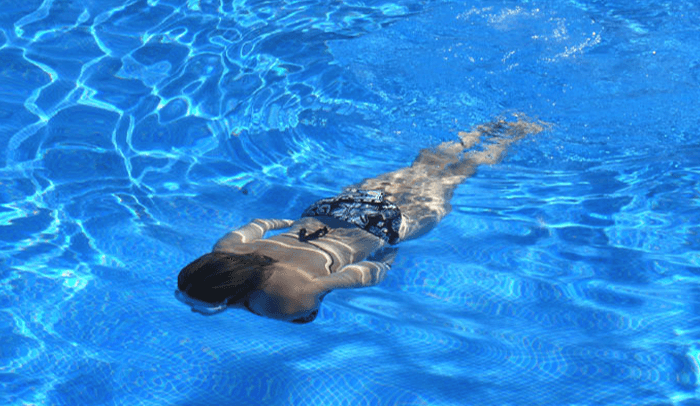What Happens If You Swim In A Shocked Pool?
For the uninitiated, the idea of a shocking pool is scary enough on its own to not even think about swimming in it. In fact, the word “shocked” has nothing to do with electricity, but a way to keep your pool water clean and healthy. Still, it does come with risks that you should be aware of. What happens if you swim in a fright pool? If you don’t wait for the chemicals used to hit the pool to dissolve completely, you could put yourself in serious danger by swimming in it. At the very least, you’ll experience itchy skin and eyes due to the chemicals in the water. You may even be at risk of poisoning and death if you accidentally drink from a recently shocked pool.
What Is Pool Shock?
If you leave the pool without any treatment, not only will it become unsightly, it will become unsafe. Over time, unless the water is treated, different types of bacteria and algae will begin to develop. It’s a heat-influenced process, so in summers or countries with generally hotter climates, you’ll find these microbes develop faster.
Shock pond is a term for the treatment of water that inhibits the growth of these bacteria and algae. There are three main types of these chemicals: calcium hypochlorite, sodium dichloride, and potassium persulfate. The type of chemicals you use will determine how long you have to wait before swimming in the pool.
How Long Should I Wait Before Swimming In A Shocked Pool?
The three main chemicals used in shock pools are calcium hypochlorite, sodium dichloride, and potassium persulfate, and the waiting time before a shock pool swim will vary depending on the chemicals used.
If you are using calcium hypochlorite or sodium dichloride, it is recommended to wait 4-8 hours before swimming in the pool. As a result, many people like to blast their pools at night so the chemicals are safe to swim in all night long.
If you use potassium persulfate, the wait time is much shorter. This is the main reason to use this chemical because you only have to wait about 15 minutes before jumping into the pool again after the treatment.
What Happens If You Swim In A Shocked Pool?

- skin irritation and rash
No creature likes too much chlorine, and neither does your skin. The high chlorine concentration of dichloride and granular chlorine can burn the skin surface and make the skin uncomfortable.
If you already have skin problems, things can get really bad. Chlorine dehydrates and burns cells. If you already have it, it intensifies the irritation.
Don’t be surprised if you see a rash after coming out of the pool. Maybe you jumped too fast.
- dry itchy eyes
Chlorine makes things dry and hard. Your eyes need constant hydration, and exposure to high levels of chlorine can be uncomfortable.
You’ll realize that you’ve dipped into a shocked pool of water too quickly due to severely itchy and dry eyes. Have you ever noticed that every time you swim in a different pool, it feels different? It is the difference in chlorine concentration that makes the difference.
Chlorine levels in swimming pools need to be around 5 ppm for smooth swimming.
- discoloration of clothes
Chlorine is very irritating to the color of fabrics. Too many chemicals can fade any color, fading or whitening the fabric. Use the same precautions when cleaning your kitchen top or sink with Clorox.
- poisoning
Yes, chlorine is highly toxic to you. As long as the concentration is around 5 ppm, no problem arises. But immediately after the pool exploded, the numbers were hundreds of times higher than normal. If you digest water, then things can get very dangerous.
In the event of chlorine poisoning, call 911 or a poison control center immediately for help. Do not attempt to induce vomiting unless directed by a health care professional. If possible, have the patient drink water.
- severe digestive problems
Most of the time, the digestion of chlorine can cause serious digestive problems. You can feel stomach cramps, pain, diarrhea, nausea, and dizziness.
It is best to drink plenty of water to dissolve the chemicals. Inattention can reduce the severity of the problem. If the patient still has symptoms, call 911 or a poison control center for help.
- breathing problems
Chlorine vapors are just as dangerous to our health as liquids. The vapor directly affects the lining of the lungs, making it difficult to breathe. If you have asthma or chronic bronchitis, things can get really bad.
If someone breathes chlorine vapor, give artificial respiration through the mouth. Do not wait to call 911 for immediate medical attention.
How To Know If My Pool Is Safe To Swim In?
Your first step is to follow the guidelines for the chemicals you use to hit your pool. Read the instructions correctly and follow them as they are for your safety. Once you have followed the guidelines and want to double-check the pool is safe, then you can check the chlorine levels. Once the chlorine level is below 5 ppm, it is safe to swim (source). You can test for chlorine levels quickly and easily, and you can buy test kits at any pool store, they’re cheap and easy to use.
How Often Should I Shock the Pool?
In the summer it is always better to hit the pool once a week. Many people use the same pool, leaving the water full of dirt and microbes. So clean it often.
Rain is another common enemy of pool water. It contains a lot of acids and other harmful ingredients. Swimming pool maintenance companies recommend that you hit the pool after heavy rain. In the summer it is always better to hit the pool once a week. Many people use the same pool, leaving the water full of dirt and microbes. So clean it often.
Final Thoughts
To protect pool users from infection, all you need to do is shock the pool. When you swim in the pool, take your time and follow the guidelines for whatever chemistry you choose.
It is wise to let others know that they are only going swimming when it is safe to do so. This is especially important if you have children around who may not understand the dangers of swimming in a recently shocked pool.
